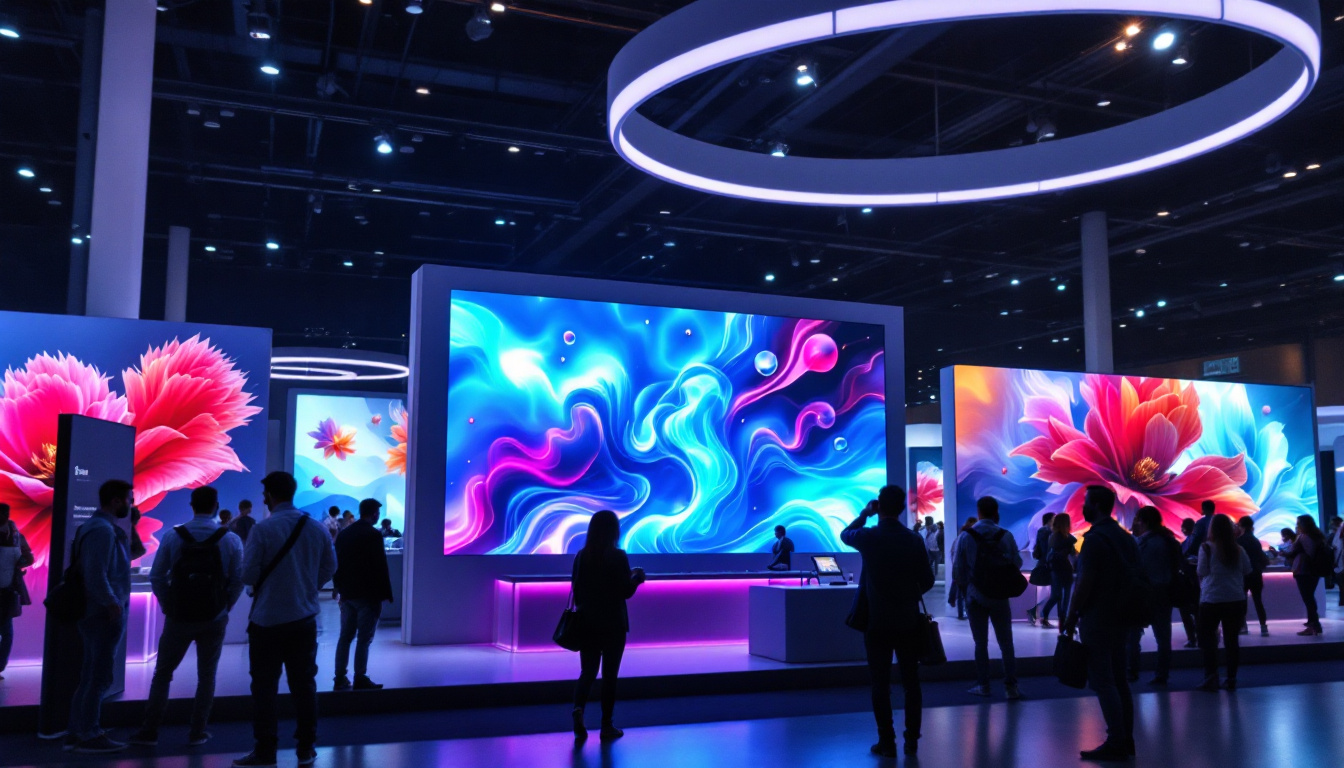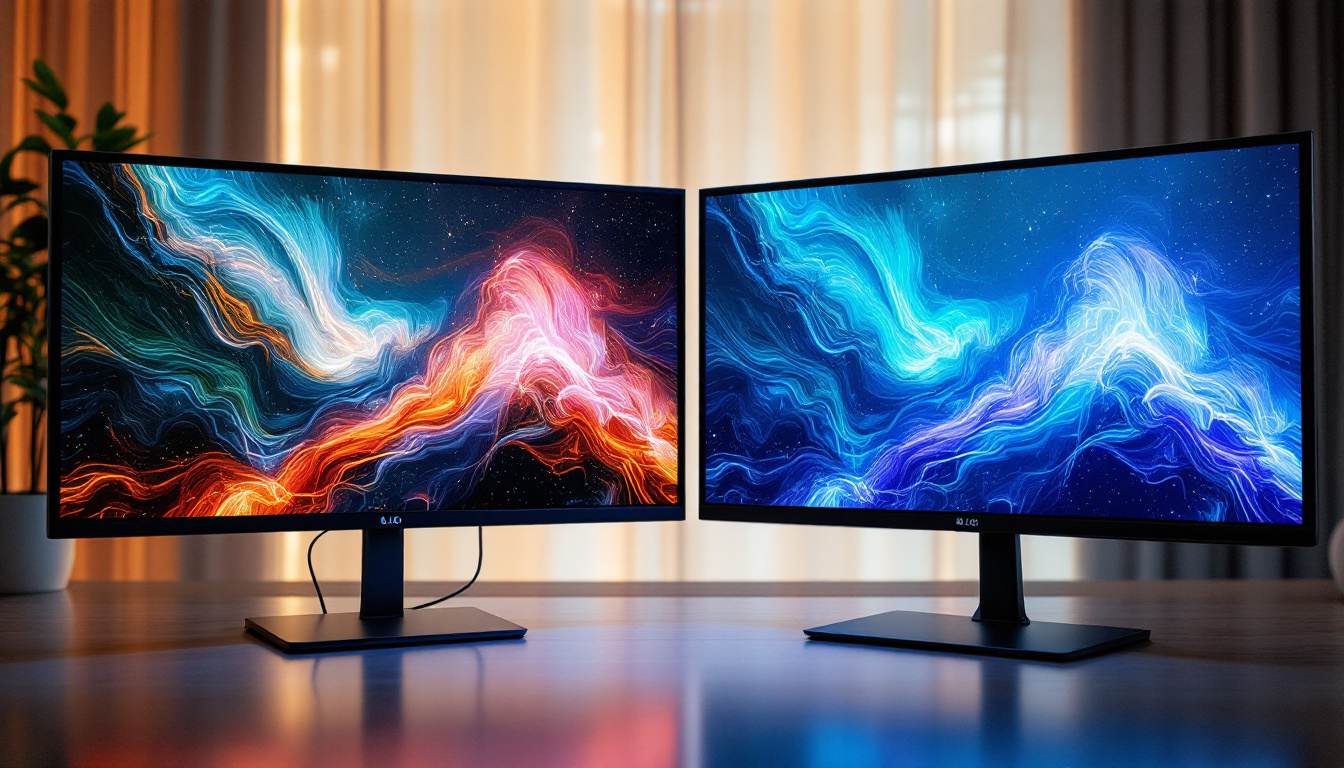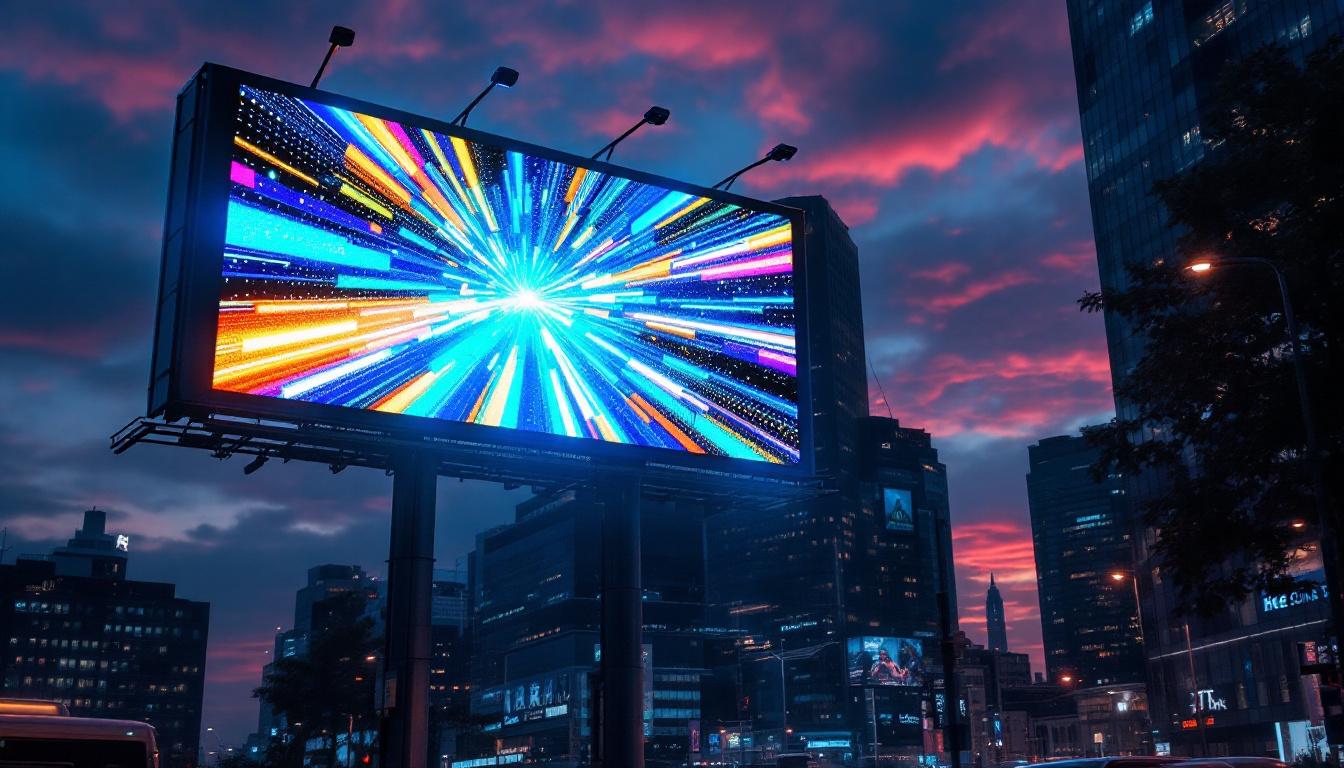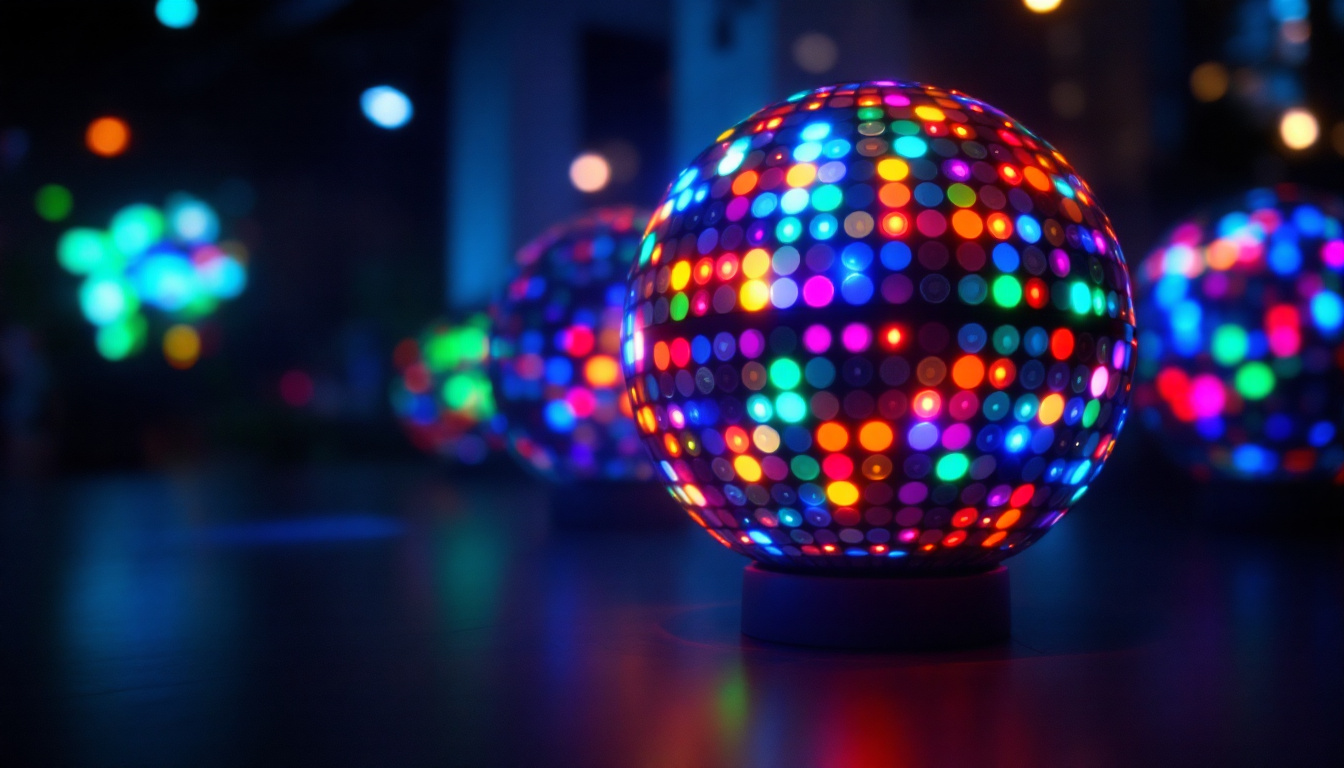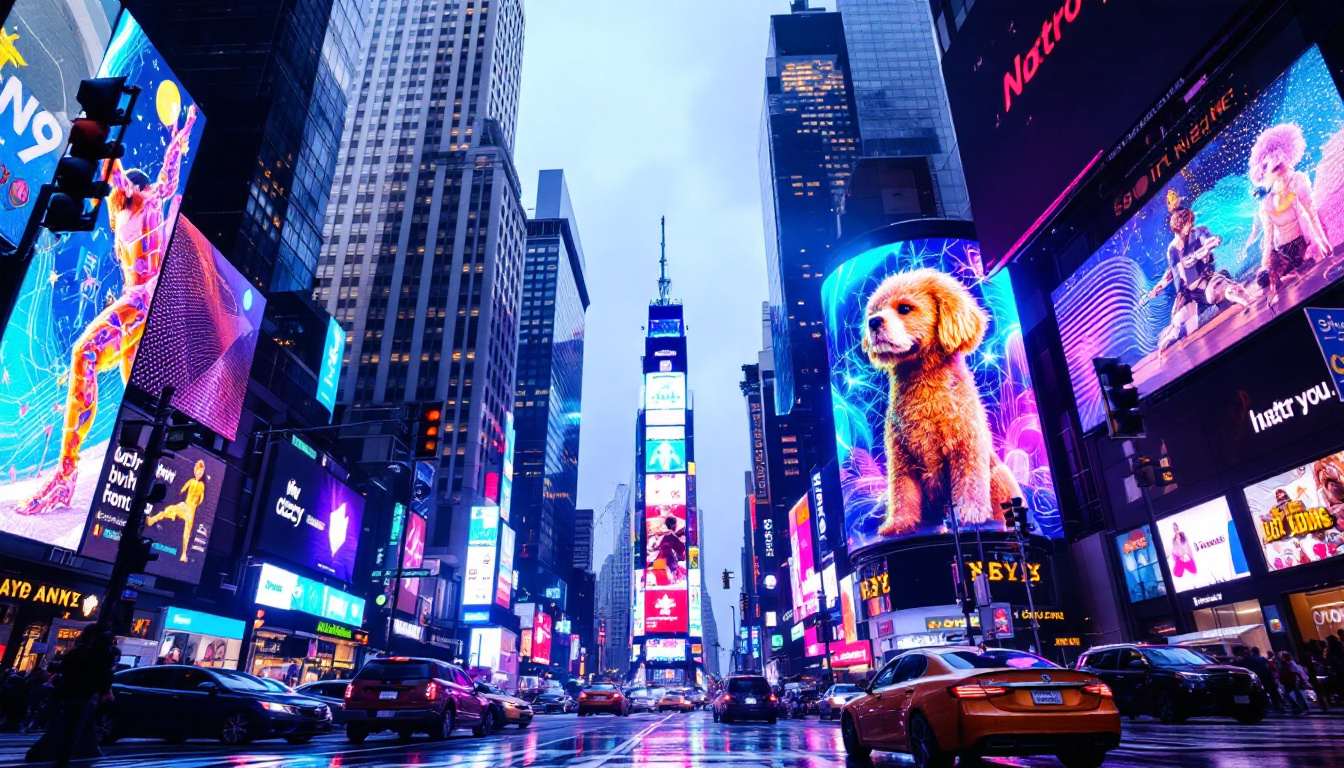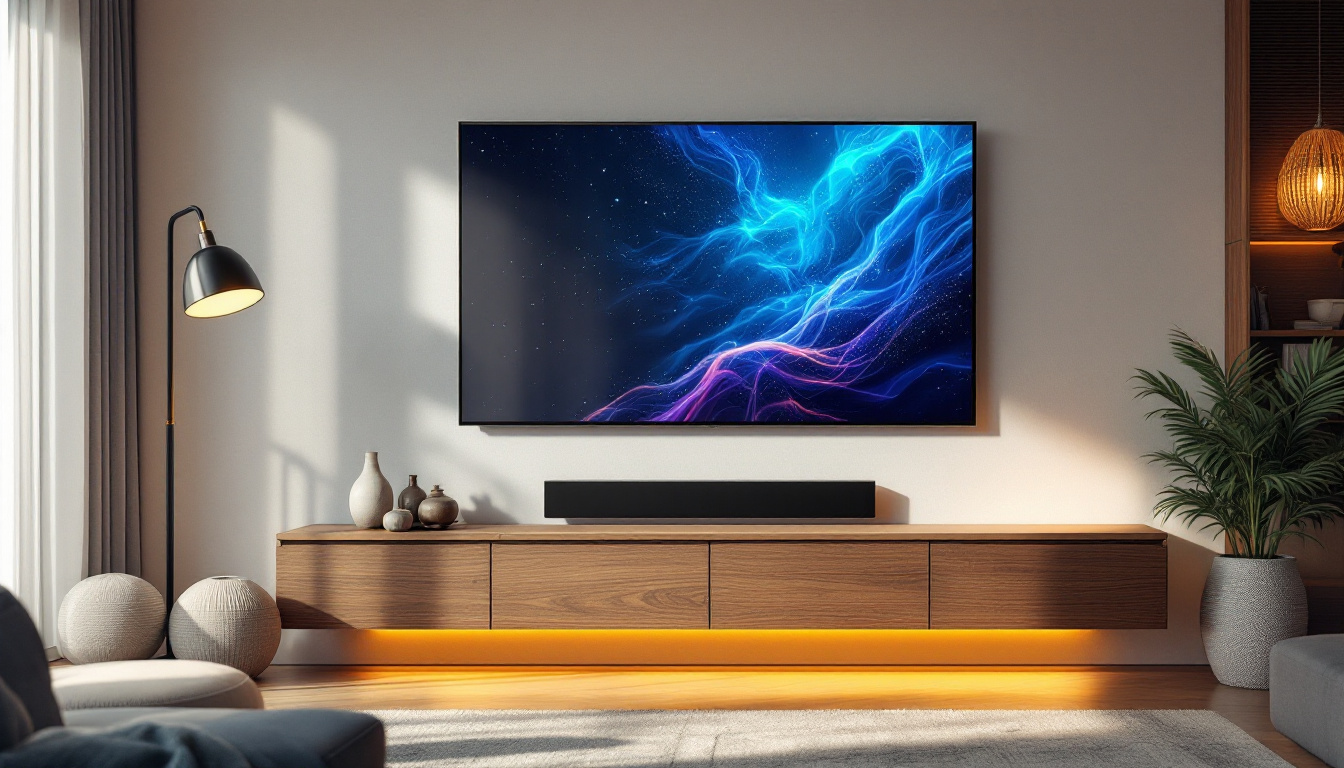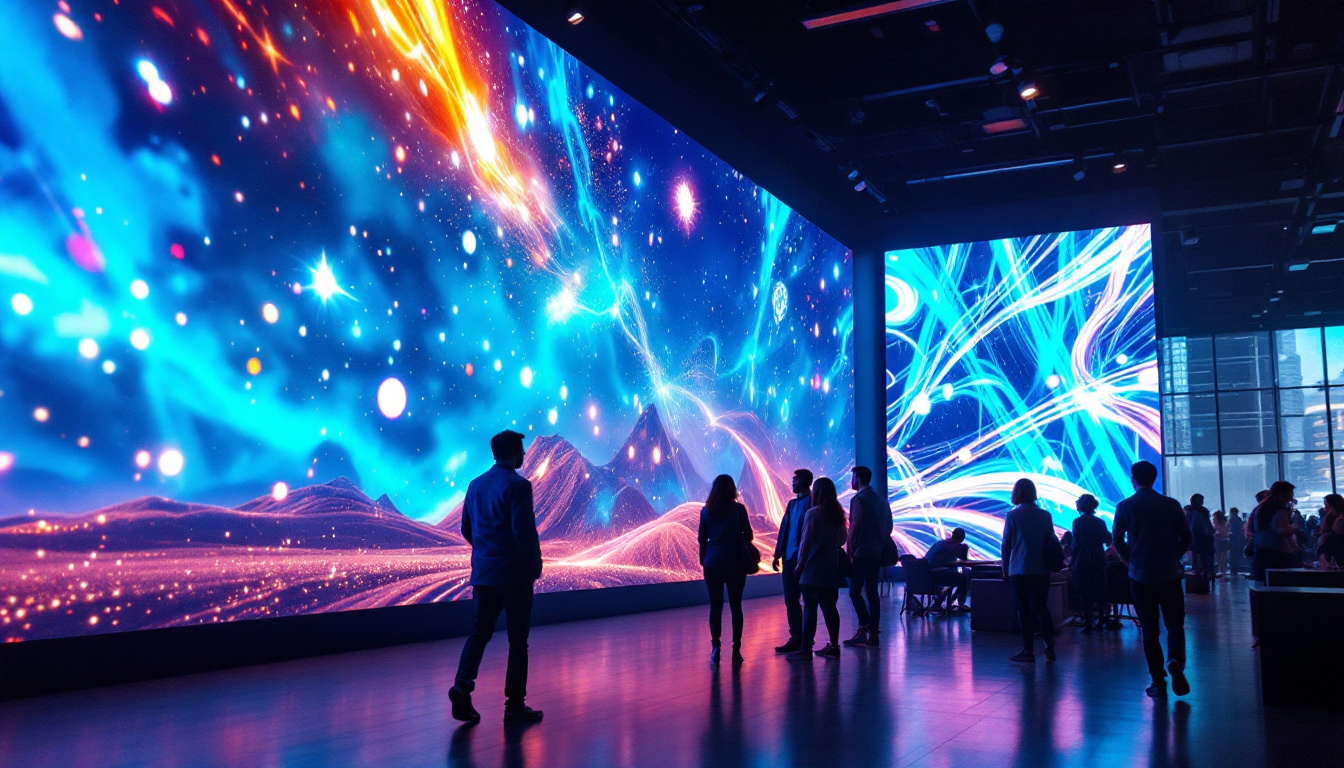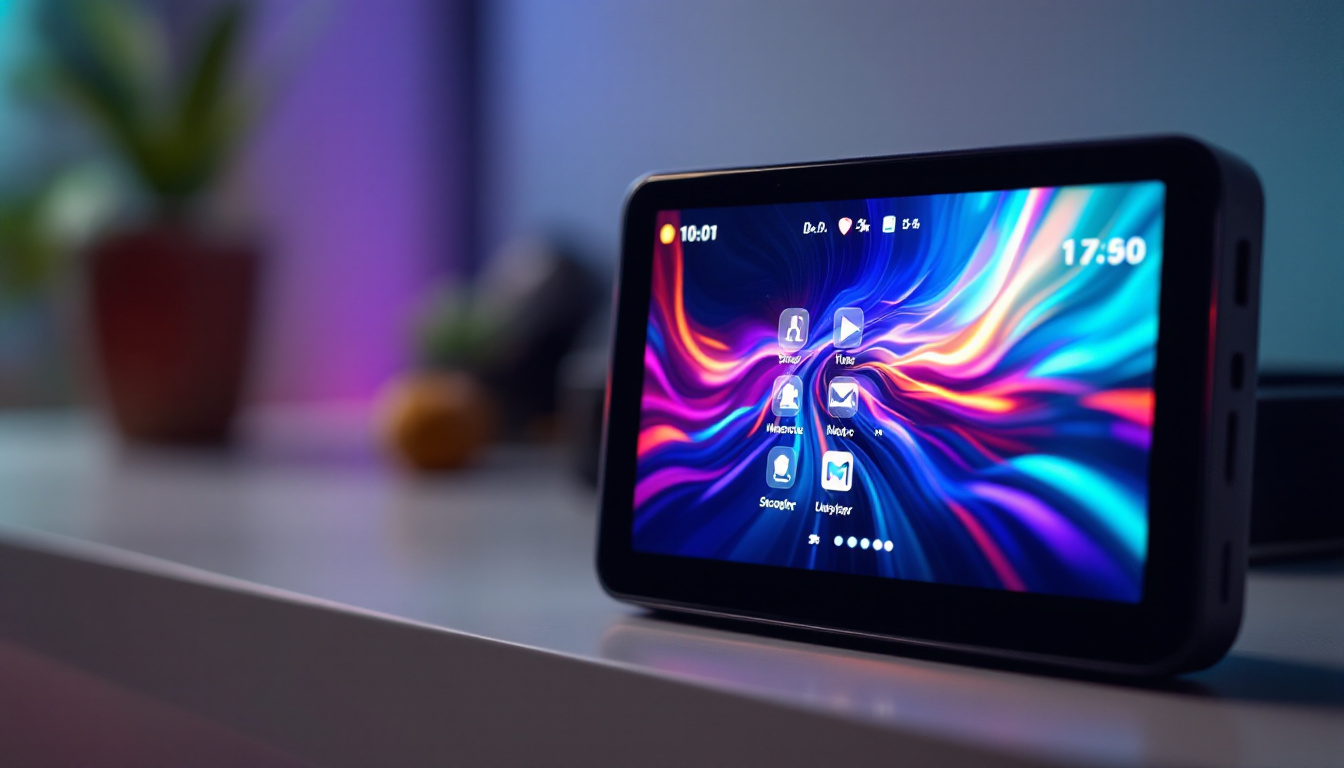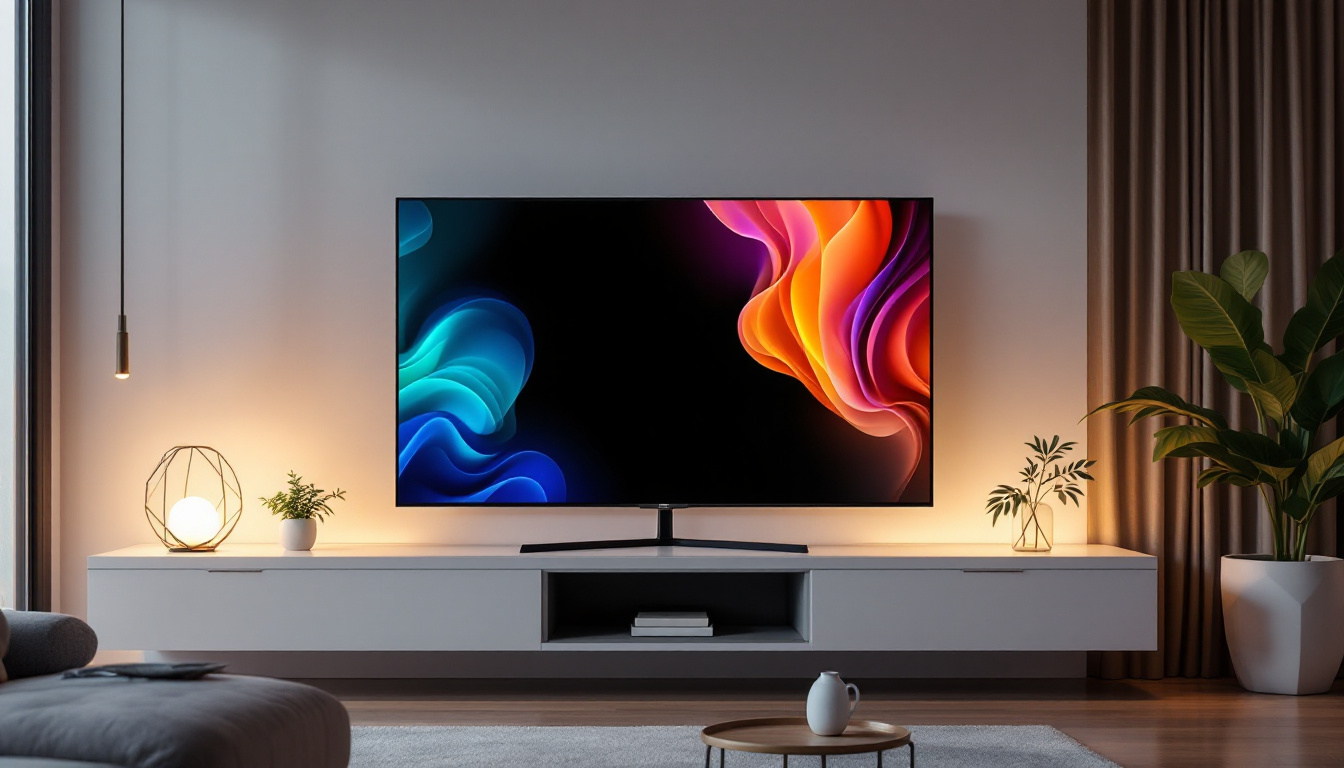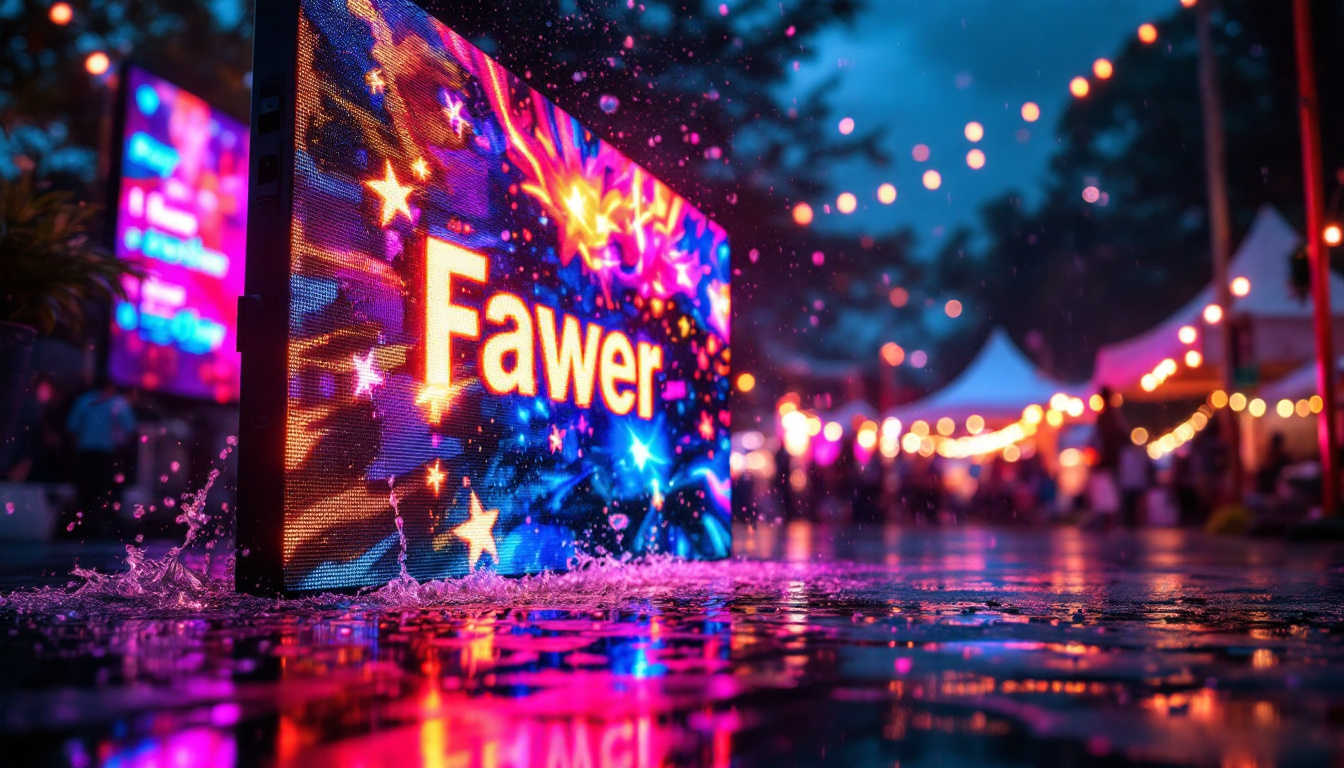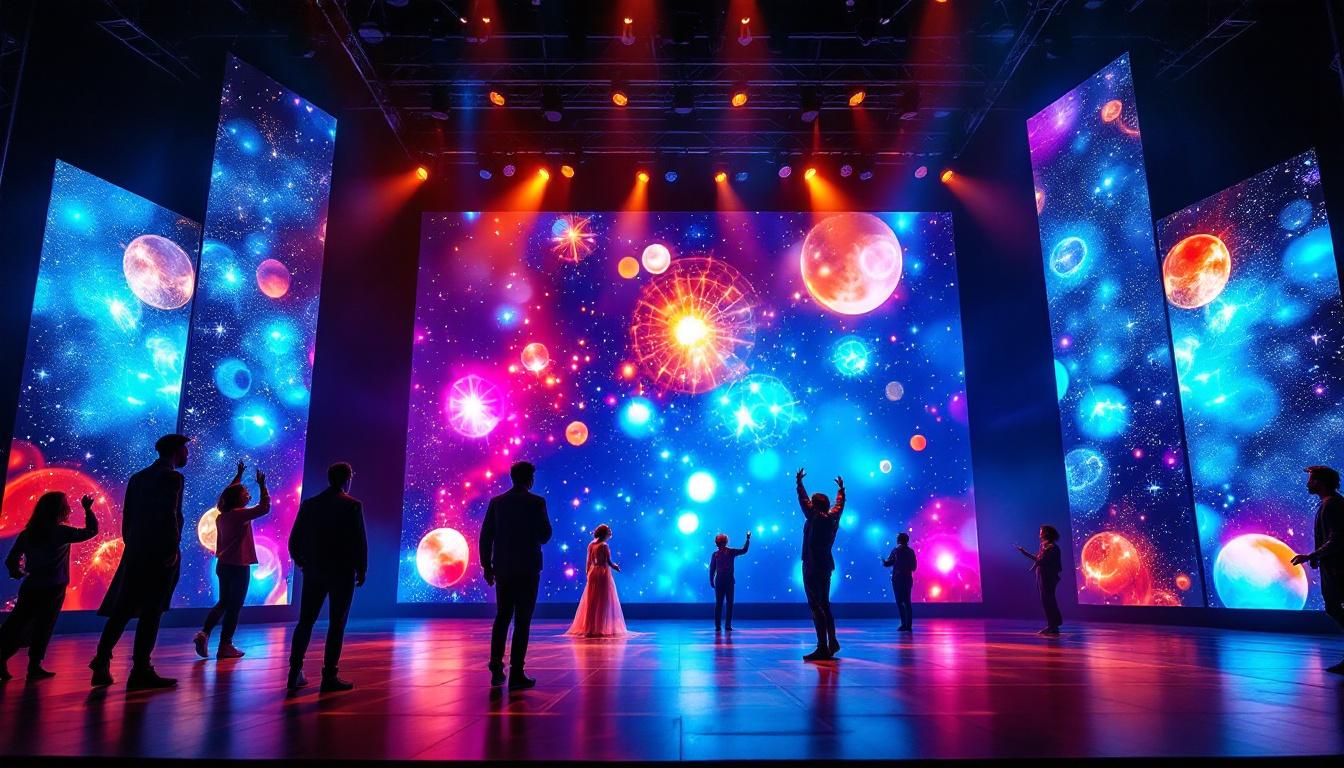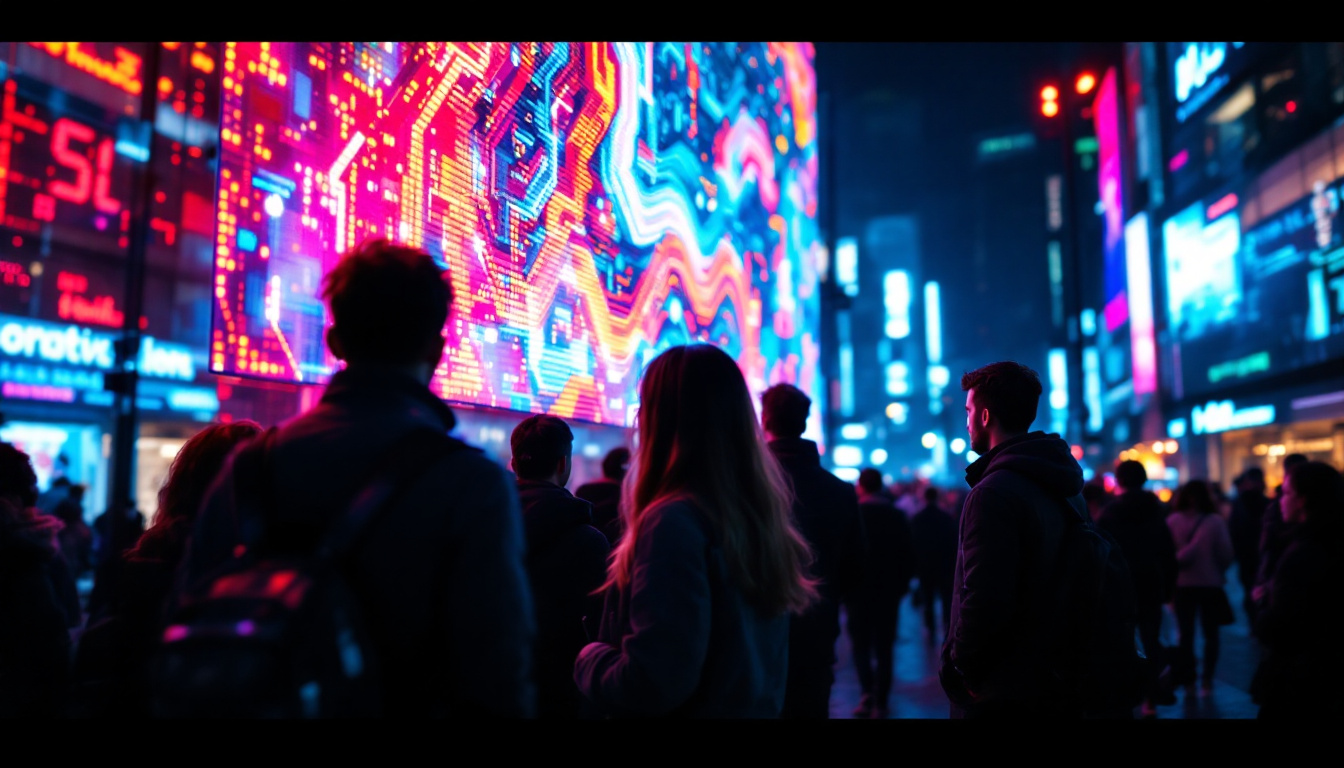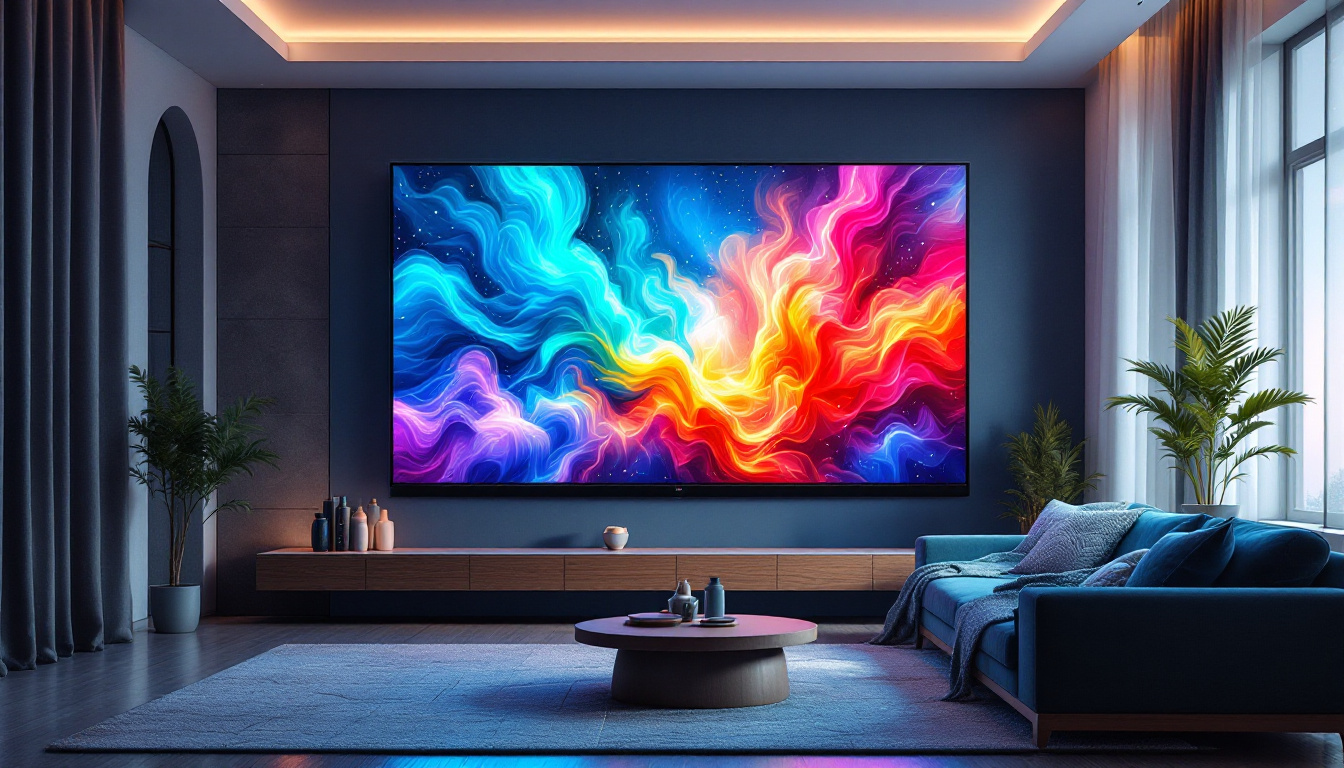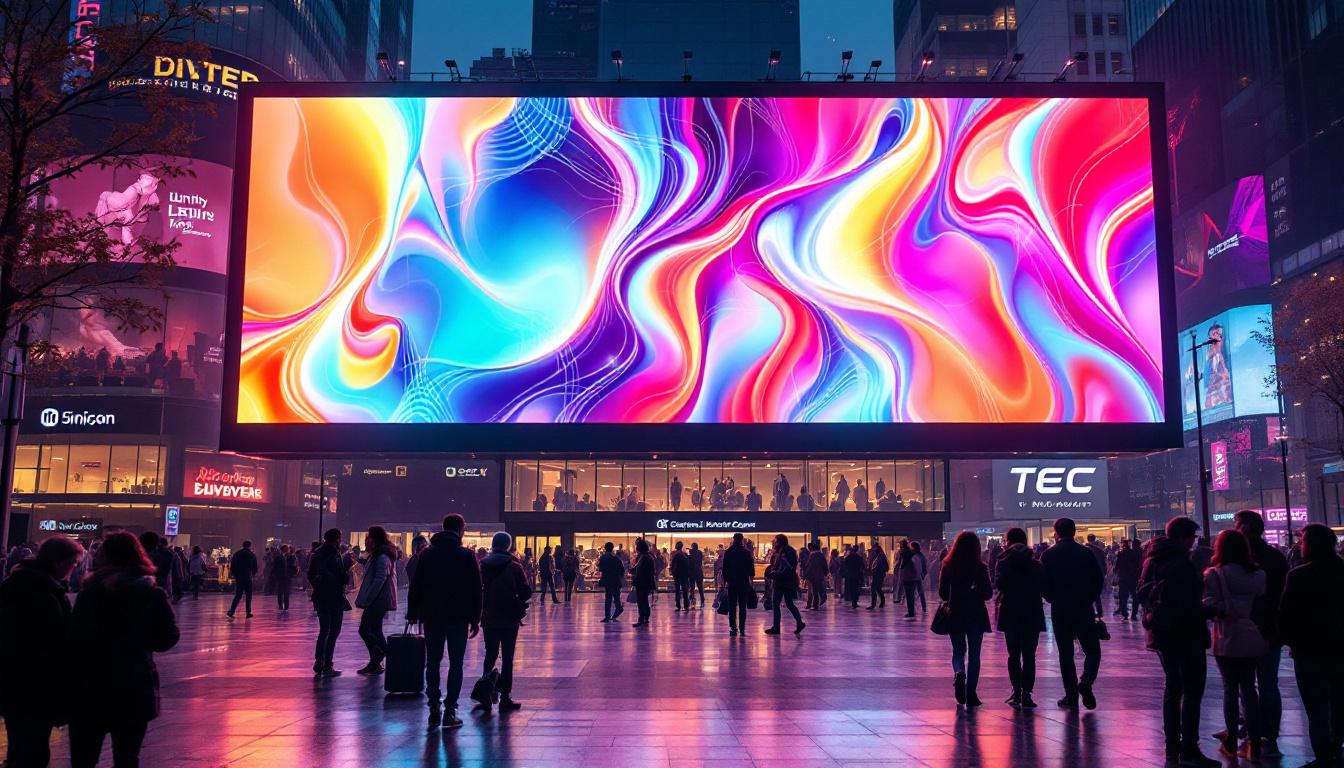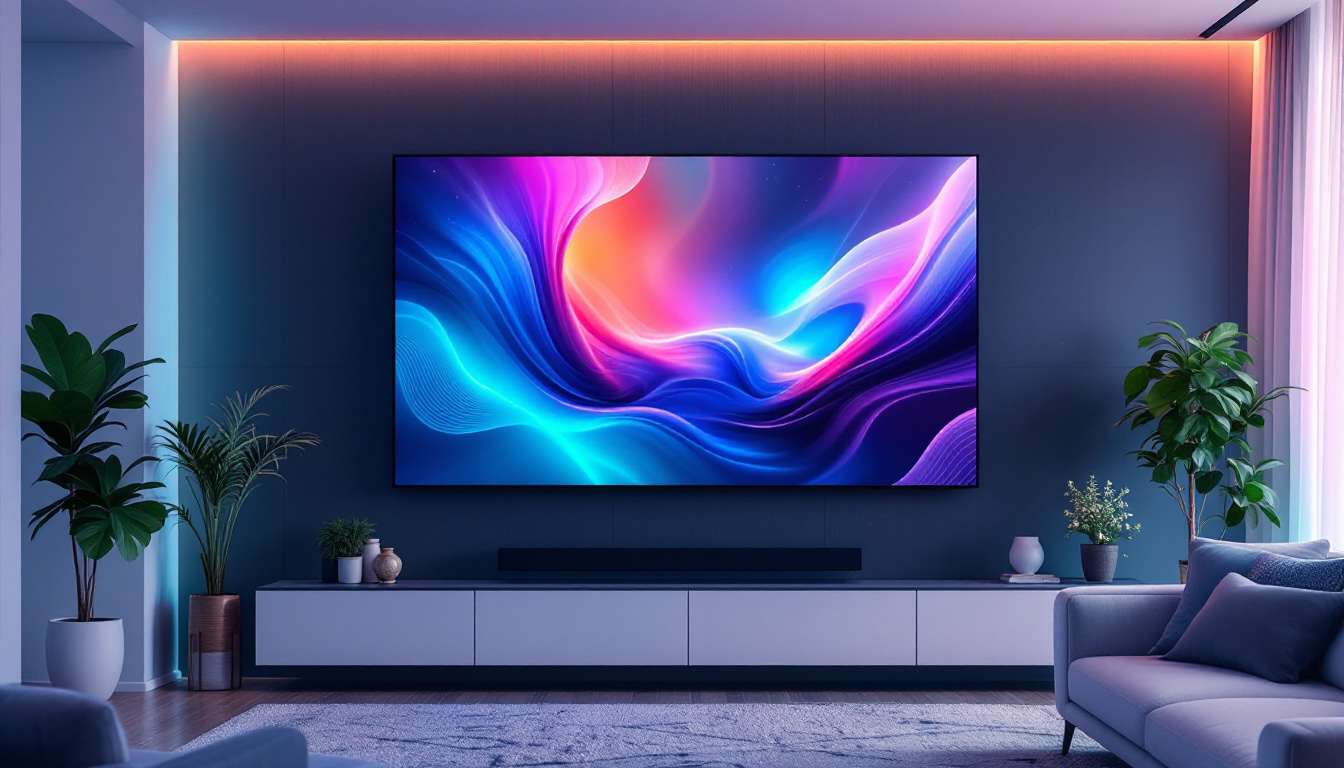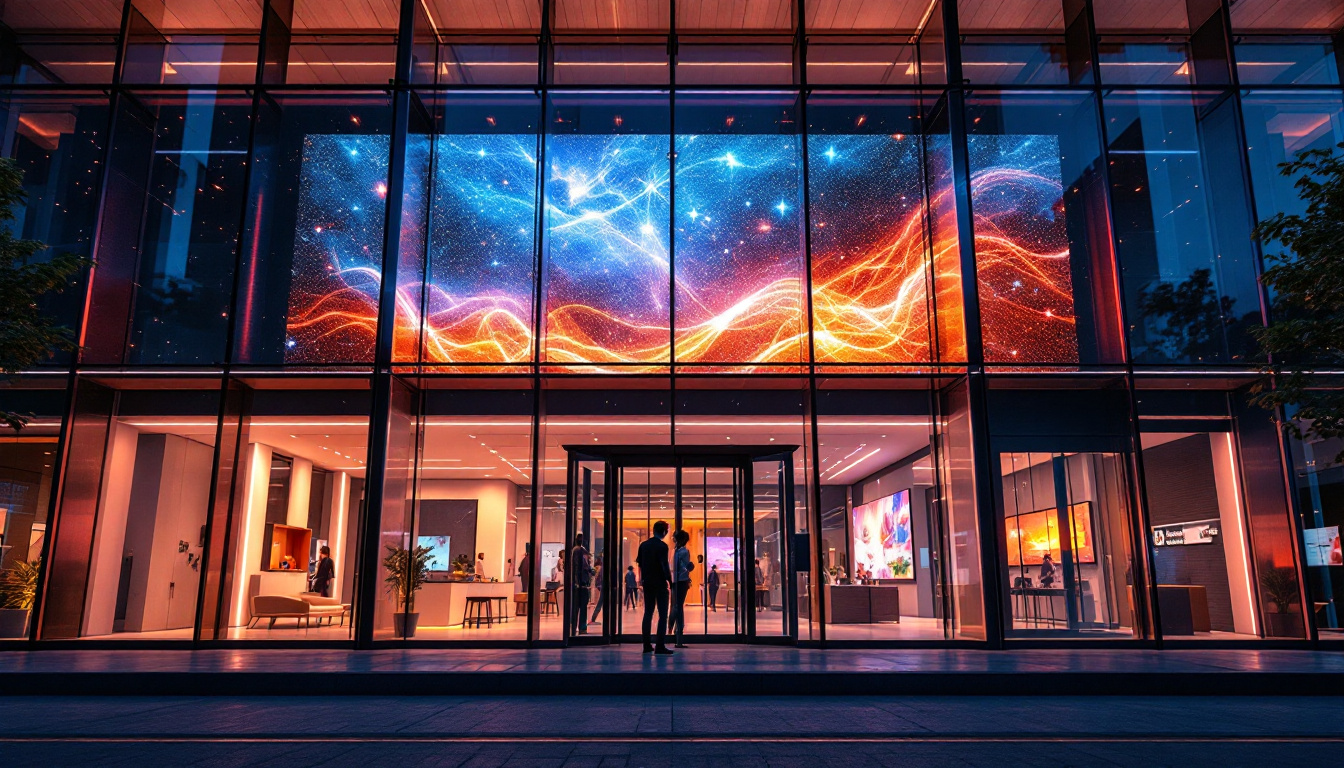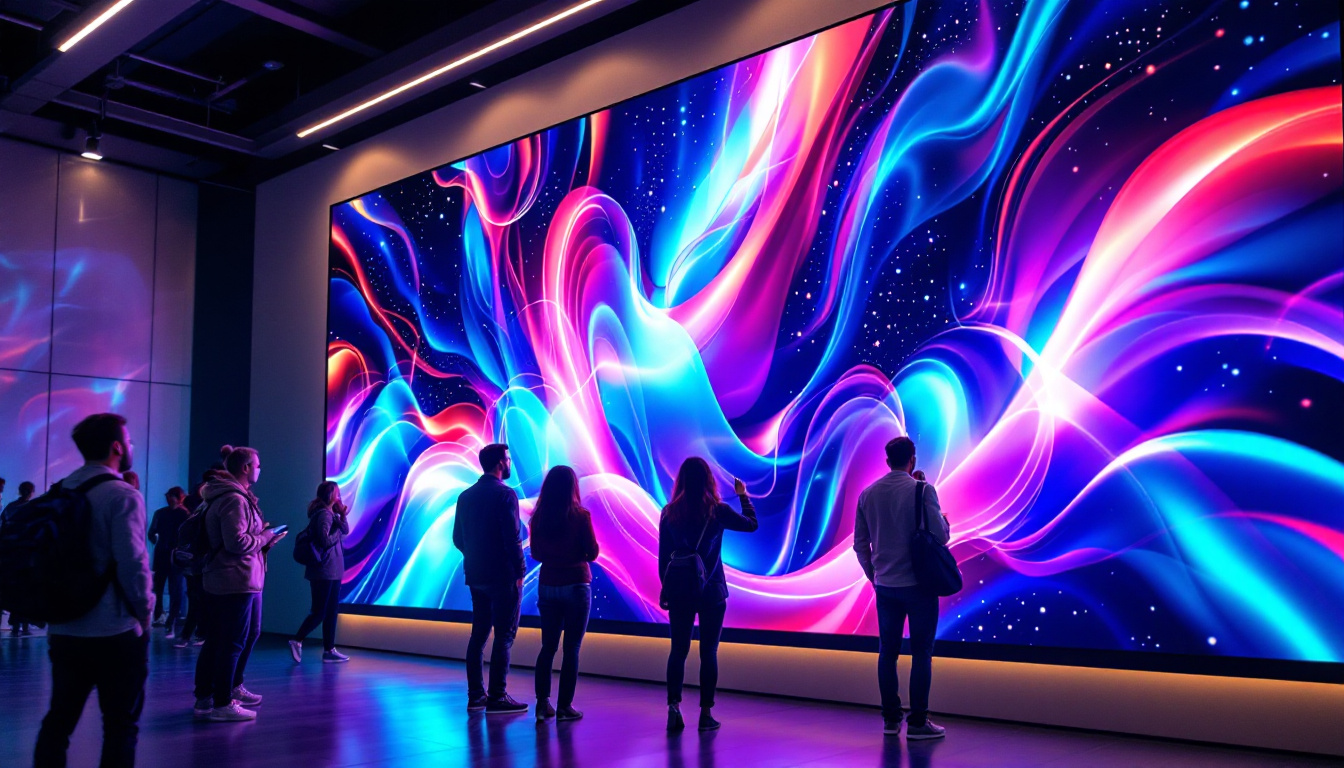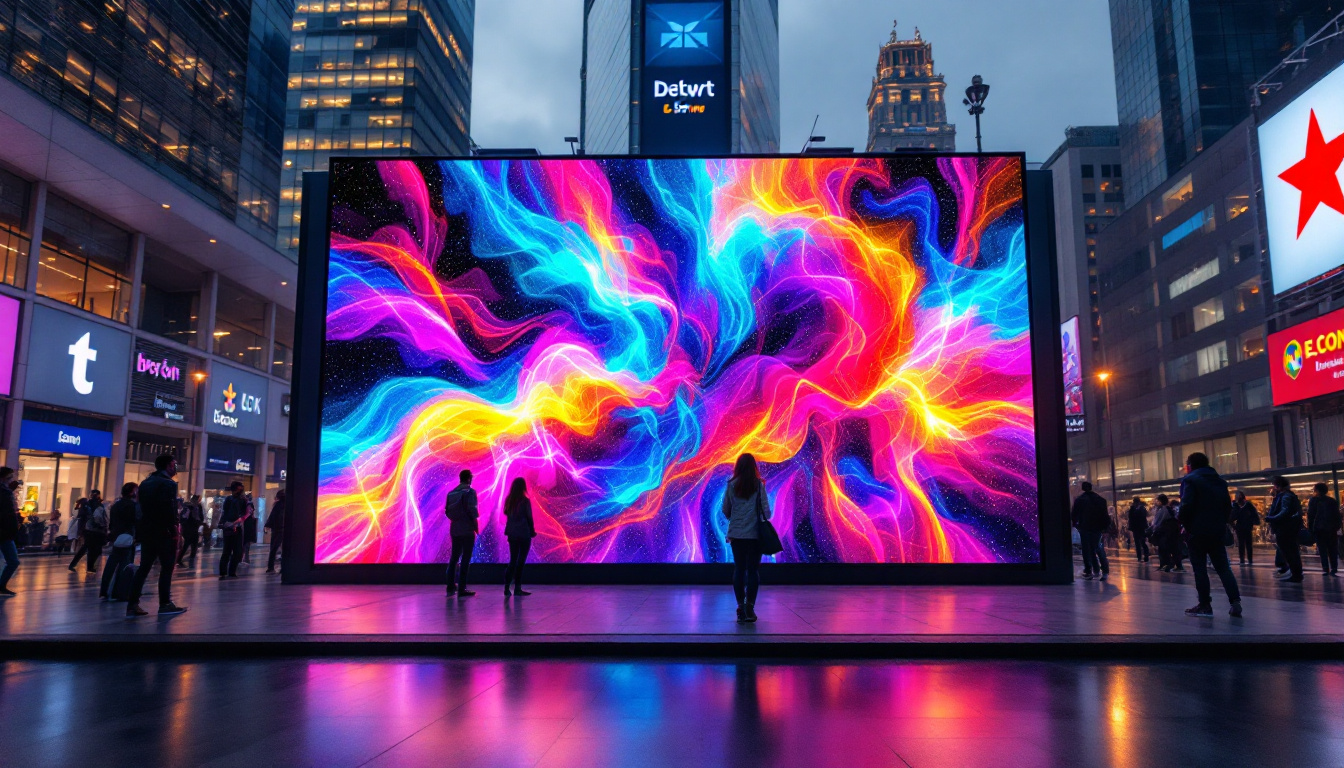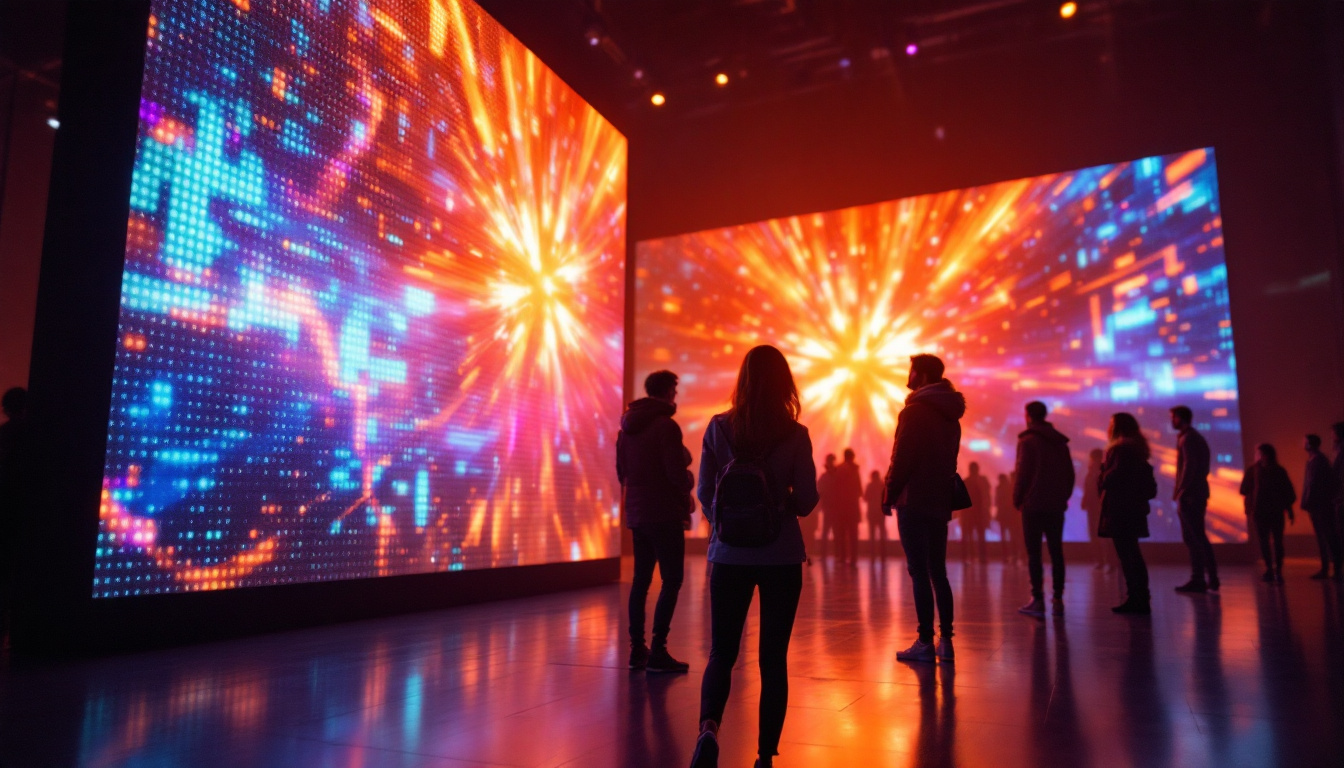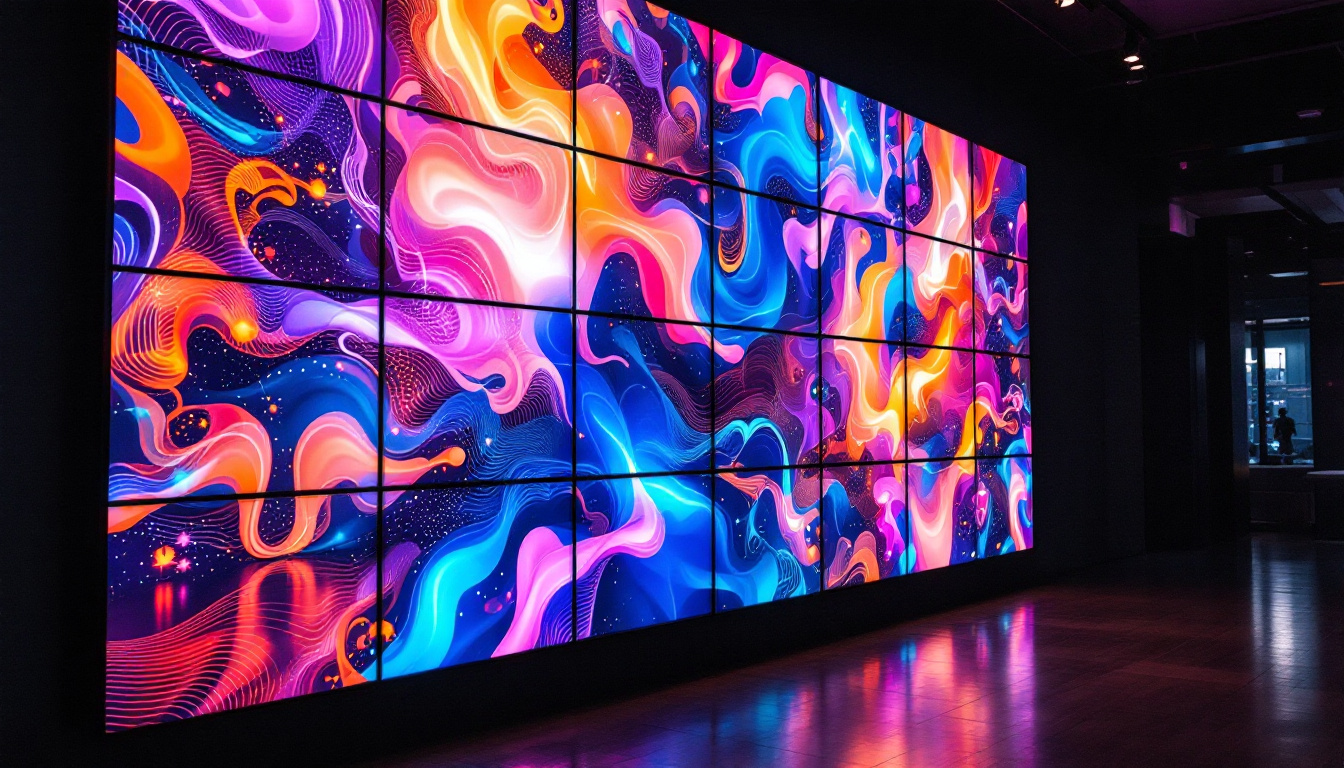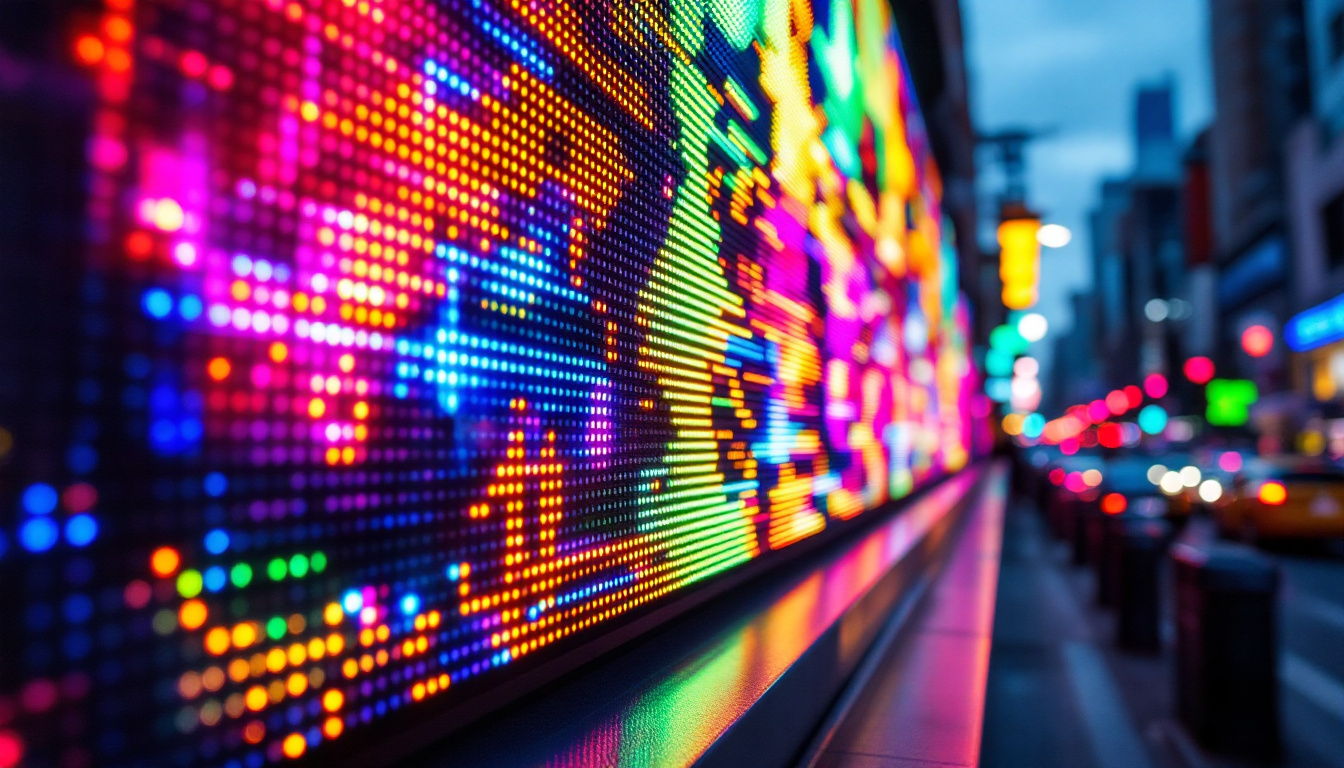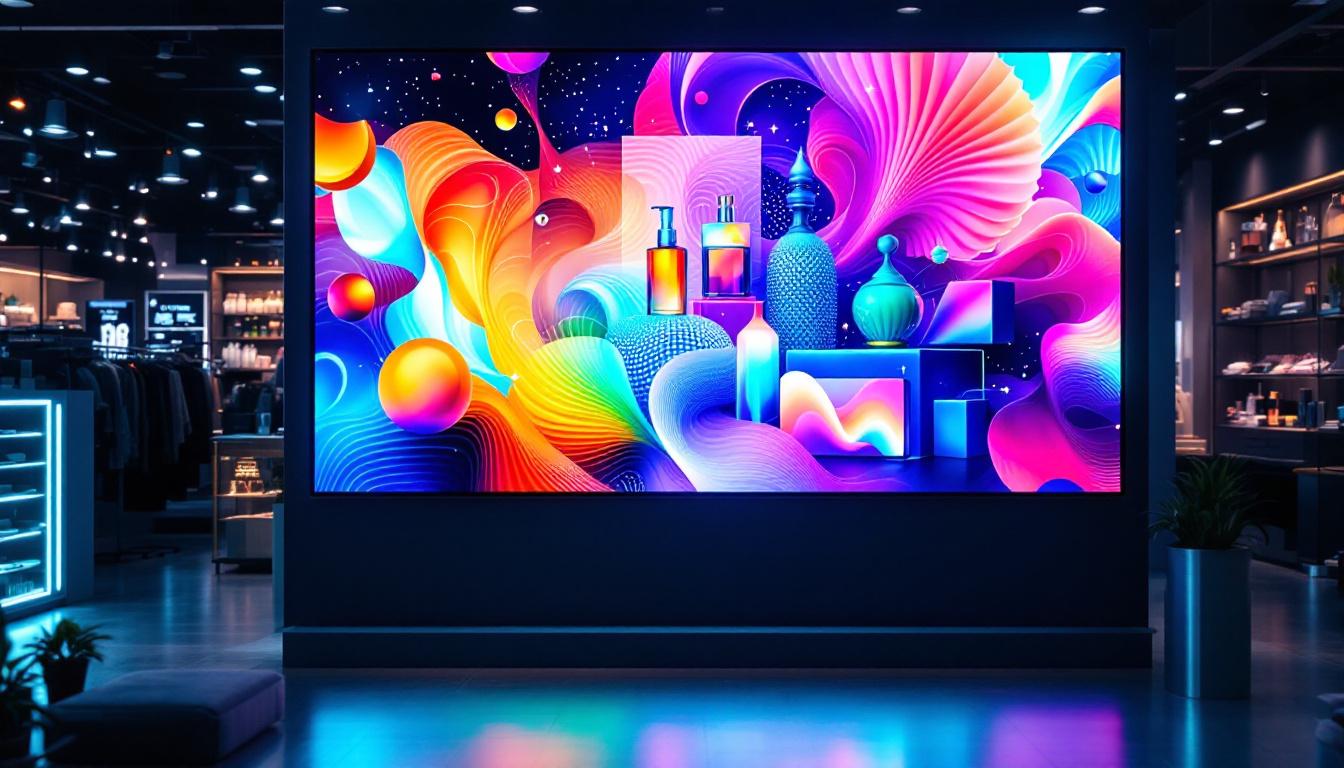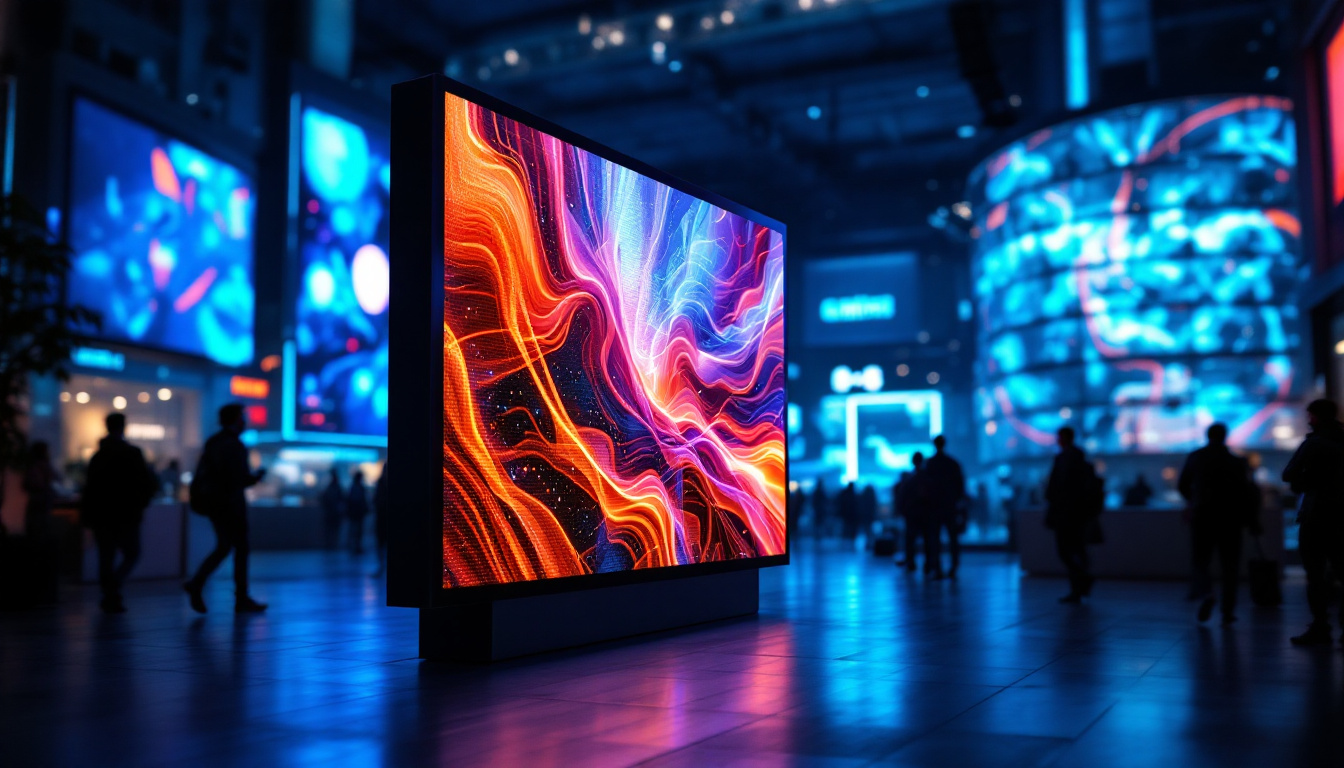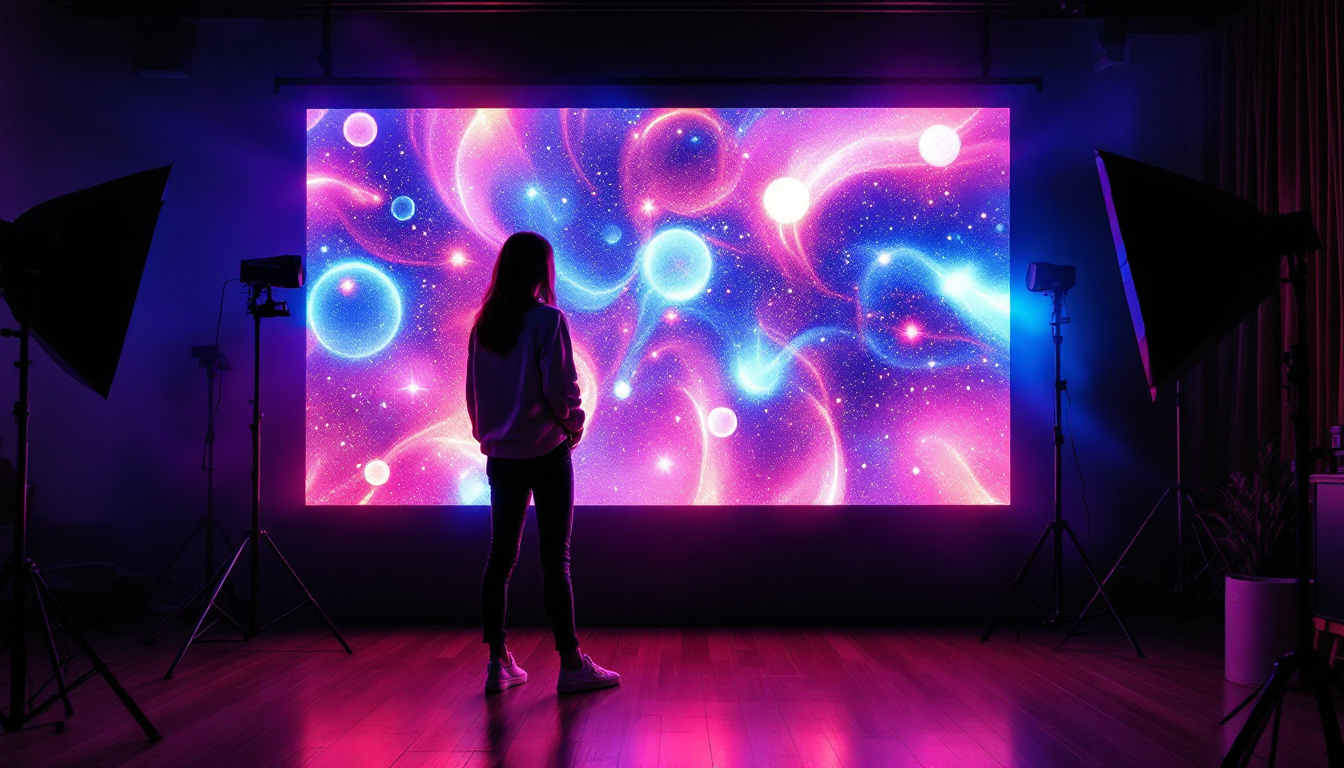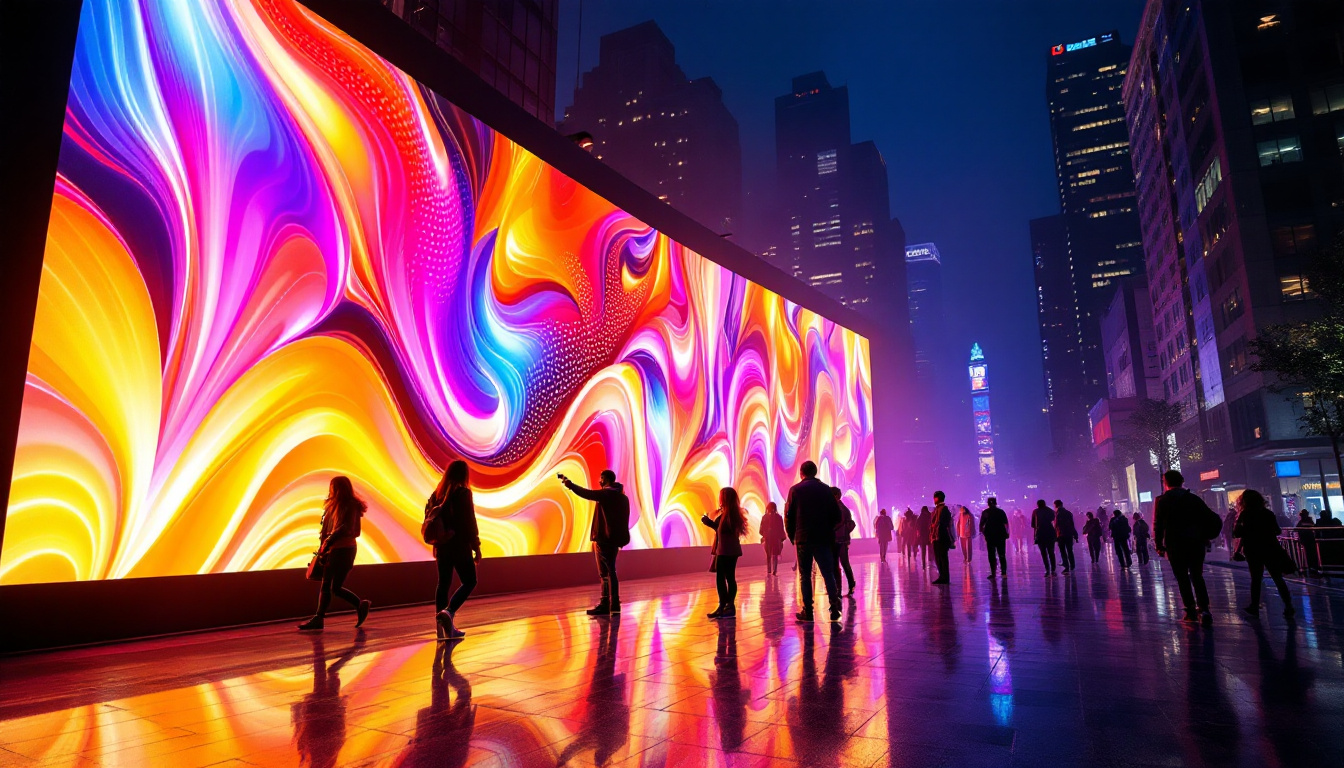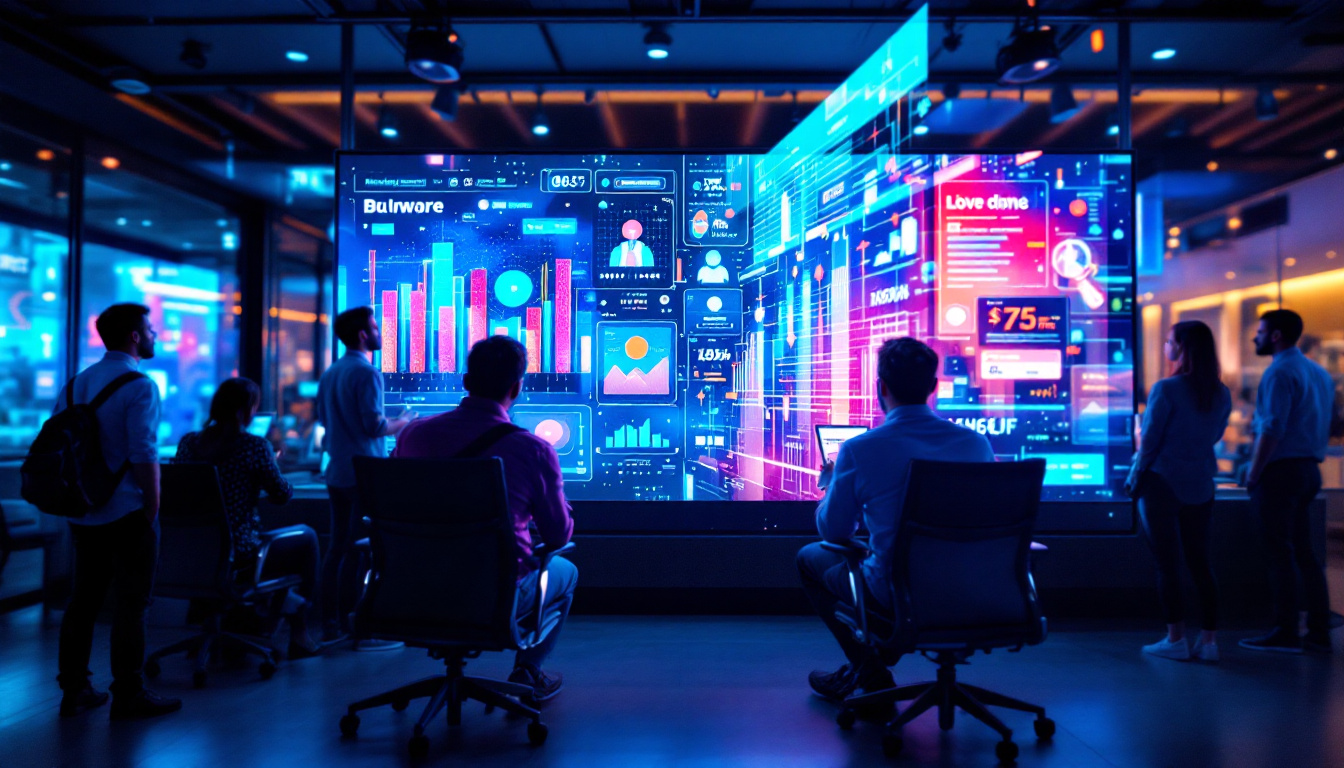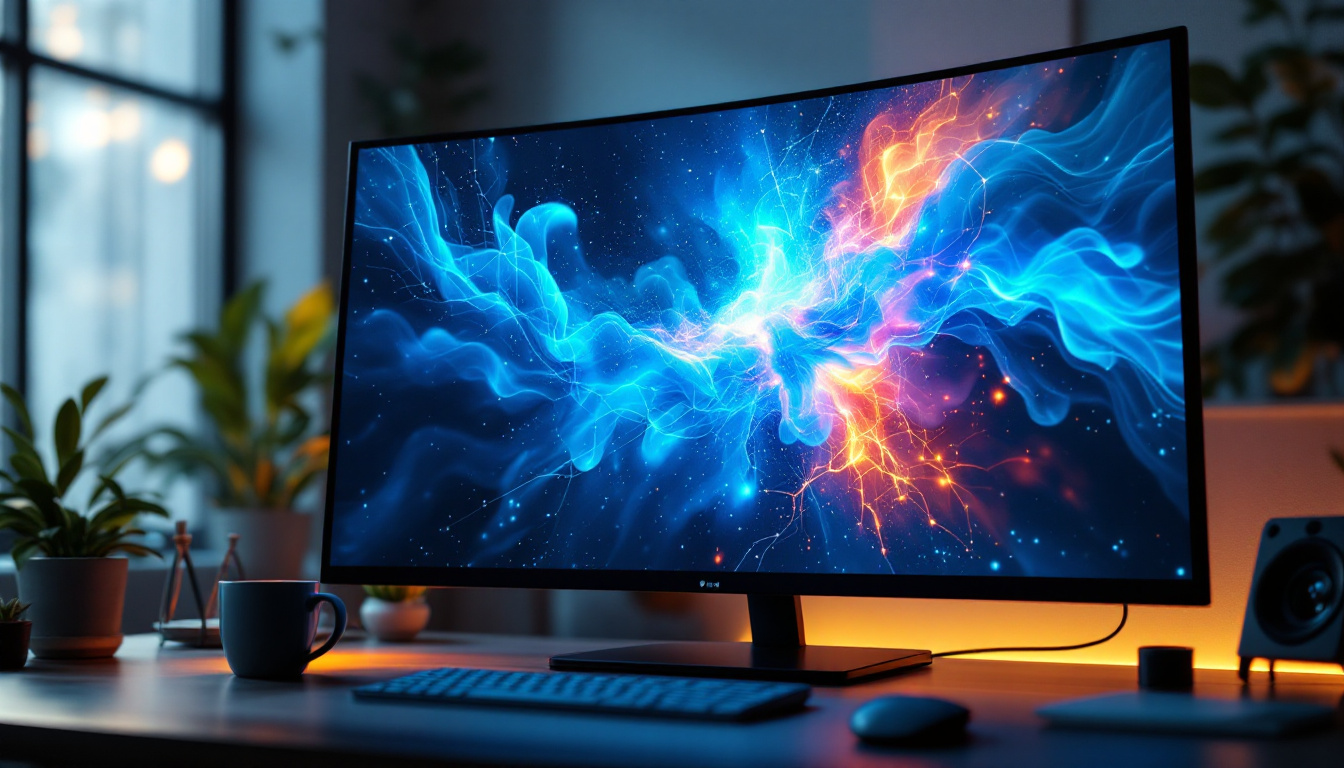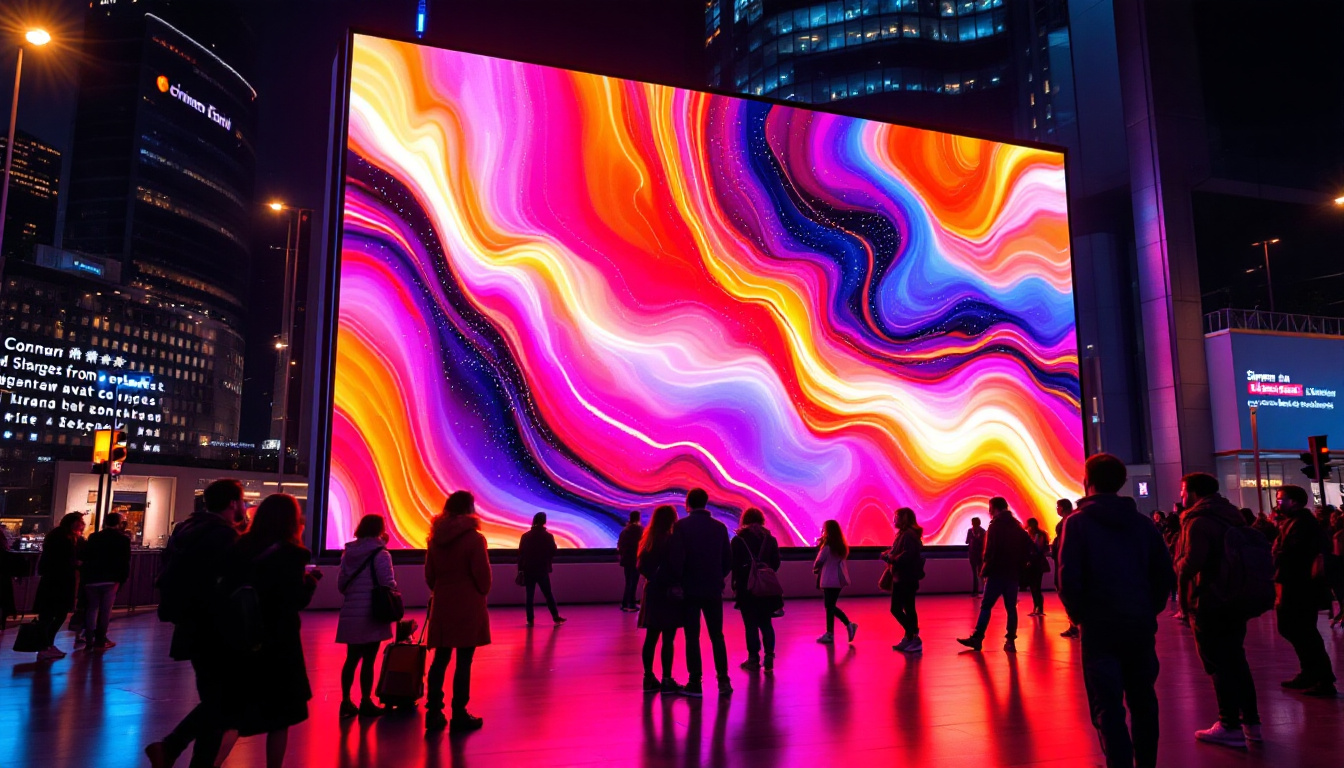In the world of trade shows and exhibitions, vendor booths serve as the frontline for businesses to showcase their products and services. Among the various elements that contribute to a booth’s success, the choice of display technology plays a pivotal role. One of the most impactful options available today is the LED display. This article delves into the intricacies of vendor booth walls featuring LED displays, exploring their benefits, types, and best practices for implementation.
Understanding LED Displays
LED displays, or Light Emitting Diode displays, are a form of digital signage that utilizes semiconductor technology to produce light. These displays have gained immense popularity due to their vibrant colors, high brightness, and energy efficiency. They can be used in various formats, including large screens, video walls, and even smaller panels that can be integrated into booth designs. The versatility of LED displays allows businesses to tailor their visual communication strategies to fit their specific needs, whether for advertising, information dissemination, or entertainment purposes.
The Technology Behind LED Displays
At the core of LED displays is the LED technology itself. Each pixel in an LED display is made up of tiny diodes that emit light when an electric current passes through them. This allows for the creation of bright images and videos that can be seen clearly from a distance. The ability to adjust brightness and color dynamically makes LED displays ideal for capturing the attention of passersby in busy exhibition environments. Additionally, the rapid response time of LEDs means that they can produce high-quality video content without motion blur, enhancing the viewer’s experience.
Moreover, advancements in LED technology have led to the development of various types of displays, including OLED (Organic LED) and QLED (Quantum Dot LED), each offering unique benefits in terms of color accuracy and contrast. OLED displays, for instance, provide deeper blacks and more vibrant colors due to their ability to turn off individual pixels completely. However, traditional LED displays remain the most common choice for vendor booths due to their affordability and versatility. The ongoing research and development in this field promise even more innovative display solutions in the future, potentially transforming how brands communicate with their audiences.
Benefits of Using LED Displays in Vendor Booths
Incorporating LED displays into vendor booth walls offers numerous advantages that can enhance the overall effectiveness of a trade show presence. Here are some key benefits:
- High Visibility: LED displays are known for their brightness, making them easily visible even in well-lit environments. This ensures that booth messages reach a wider audience.
- dynamic content: Unlike static displays, LED screens can showcase dynamic content such as videos, animations, and interactive presentations, making them more engaging for attendees.
- Energy Efficiency: LED technology is energy-efficient, consuming less power than traditional display options, which can lead to cost savings in the long run.
- Durability: LED displays are built to withstand the rigors of transport and setup, making them a reliable choice for trade shows that require frequent assembly and disassembly.
Furthermore, the use of LED displays can significantly enhance brand recall. Studies have shown that the combination of moving images and bright colors can create a lasting impression on viewers, making them more likely to remember the brand and its message long after the event has concluded. This is particularly beneficial in crowded trade show environments where competition for attention is fierce. Additionally, LED displays can be easily updated with new content, allowing vendors to adapt their messaging in real-time based on audience engagement or shifting marketing strategies.
Another important aspect to consider is the potential for interactivity. Many modern LED displays can be integrated with touch technology or connected to mobile devices, allowing attendees to engage directly with the content. This interactivity not only captivates visitors but also provides valuable data on consumer preferences and behaviors, which can be leveraged for future marketing efforts. As technology continues to evolve, the possibilities for LED displays in vendor booths are expanding, paving the way for more innovative and immersive experiences at trade shows.
Types of LED Displays for Vendor Booths
When considering LED displays for vendor booth walls, it is essential to understand the different types available and how each can be utilized effectively. The choice of display type can significantly impact the booth’s overall design and functionality.
Flat Panel LED Displays
Flat panel LED displays are perhaps the most recognizable form of LED technology. These screens come in various sizes and resolutions, making them suitable for a range of applications, from simple product displays to complex multimedia presentations. Their slim profile allows for easy integration into booth designs, ensuring a sleek and modern look.
Flat panel displays can be mounted on walls or used as freestanding units. They are ideal for showcasing promotional videos, product demonstrations, or even live social media feeds, providing a dynamic experience for attendees.
LED Video Walls
For those looking to make a bold statement, LED video walls offer an impressive solution. Composed of multiple smaller LED panels, these video walls can create a large, seamless display that captivates audiences. They are particularly effective for showcasing high-resolution content and can be configured in various shapes and sizes to fit the booth’s layout.
Video walls are perfect for presentations, brand storytelling, or immersive experiences. Their ability to display large-scale visuals makes them a powerful tool for attracting attention and generating interest in a booth.
Interactive LED Displays
Interactive LED displays take engagement to the next level by allowing attendees to interact with the content. These displays can incorporate touch technology, enabling users to navigate through information, play games, or participate in surveys directly on the screen.
By integrating interactive elements, vendors can create memorable experiences that encourage deeper connections with their audience. This not only enhances brand recall but also provides valuable insights into attendee preferences and behaviors.
Designing Your Vendor Booth with LED Displays
Successful integration of LED displays into vendor booth walls requires careful planning and design. The following considerations can help ensure that the booth effectively utilizes LED technology to its fullest potential.
Strategic Placement
The placement of LED displays is crucial for maximizing visibility and engagement. Displays should be positioned at eye level and in areas where they can be easily seen from various angles. Consider the flow of foot traffic and ensure that the displays are not obstructed by other booth elements.
Additionally, incorporating multiple displays can create a more immersive experience. For example, using a combination of flat panel displays and video walls can provide a dynamic visual narrative that draws attendees in and keeps them engaged.
Content Planning
Content is king when it comes to LED displays. Vendors should carefully curate the material that will be showcased on the screens. High-quality visuals, concise messaging, and compelling storytelling are essential for capturing attention.
It is also important to consider the duration of content. Short, looping videos or animations can be effective for quick engagement, while longer presentations may be suitable for scheduled demos or talks. Regularly updating content throughout the event can keep the booth fresh and interesting for repeat visitors.
Branding and Aesthetics
LED displays should align with the overall branding and aesthetics of the booth. Consistent use of colors, fonts, and logos across all display content reinforces brand identity and creates a cohesive look. Additionally, the design of the booth itself should complement the technology being used, ensuring that the LED displays enhance rather than detract from the overall experience.
Best Practices for LED Display Usage
To maximize the impact of LED displays in vendor booths, adhering to certain best practices can be beneficial. These practices can help ensure that the displays are used effectively and contribute positively to the overall booth experience.
Testing and Setup
Before the event, it is crucial to test the LED displays thoroughly. This includes checking for any technical issues, ensuring that content plays correctly, and verifying that the displays are calibrated for optimal brightness and color accuracy. A well-prepared setup can prevent last-minute glitches that could hinder the booth’s performance.
During setup, take the time to arrange the displays in a way that maximizes their impact. This may involve adjusting angles, heights, and distances to create the best viewing experience for attendees. Proper setup can significantly enhance the effectiveness of the displays.
Engaging Attendees
LED displays are most effective when they are used to engage attendees actively. Vendors should encourage interaction by incorporating calls to action, such as inviting visitors to participate in contests, sign up for newsletters, or engage with social media campaigns displayed on the screens.
Additionally, staff members should be trained to leverage the displays during conversations with attendees. This can include pointing out specific content on the screens or using the displays to facilitate discussions about products and services.
Post-Event Analysis
After the event, it is essential to analyze the performance of the LED displays. Gathering feedback from staff and attendees can provide valuable insights into what worked well and what could be improved for future events. Metrics such as engagement levels, foot traffic, and lead generation can help assess the overall effectiveness of the displays.
Using this data, vendors can refine their strategies for future trade shows, ensuring that their booth continues to evolve and improve over time.
Conclusion
Incorporating LED displays into vendor booth walls can transform the way businesses present themselves at trade shows and exhibitions. With their vibrant visuals, dynamic content capabilities, and energy efficiency, LED displays offer a powerful tool for attracting and engaging attendees.
By understanding the various types of LED displays available, strategically designing booth layouts, and adhering to best practices, vendors can create memorable experiences that resonate with their audience. As the landscape of trade shows continues to evolve, embracing innovative technologies like LED displays will be essential for standing out in a competitive marketplace.
Discover LumenMatrix’s Innovative LED Solutions
Ready to elevate your trade show presence and captivate your audience with cutting-edge LED displays? LumenMatrix offers a comprehensive range of LED display solutions tailored to your needs. From Indoor and Outdoor LED Wall Displays to specialized options like Vehicle, Sports, and Floor LED Displays, our products are designed to revolutionize visual communication. Embrace the power of vibrant visuals and dynamic content with LumenMatrix’s state-of-the-art technology. Check out LumenMatrix LED Display Solutions today and transform your vendor booth into an unforgettable visual experience.

